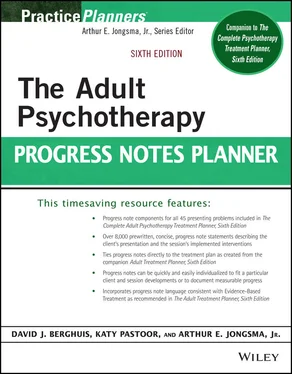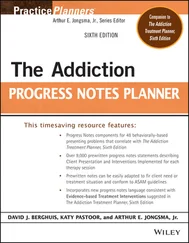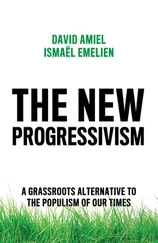7 Depression and Low Self-Esteem (5)The client reported feelings of low self-esteem and depression related to painful experiences of childhood.As the client has shared his/her/their pain related to childhood experiences, the feelings of low self-esteem and depression have diminished.The client reported increased feelings of positive self-esteem and a lifting of depression.
8 Identity Conflicts/Anxious Insecurity (5)The client reported struggles with his/her/their identity and feelings of insecurity due to painful childhood experiences.The client reported a clearer sense of identity and more self-confidence as his/her/their painful childhood experiences were processed.
9 Dissociative Phenomena (6)The client reported the presence of dissociative phenomena during times of high stress as a result of childhood emotional pain.The client reported that his/her/their experiences of dissociative phenomena have terminated as he/she/they worked through the painful experiences of his/her/their childhood.
INTERVENTIONS IMPLEMENTED
1 Establish Rapport (1) 2 Caring was conveyed to the client through support, warmth, and empathy.The client was provided with nonjudgmental support, and a level of trust was developed.The client was urged to feel safe in expressing his/her/their childhood trauma.The client began to express feelings more freely as rapport and trust level have increased.The client has continued to experience difficulty being open and direct about his/her/their expression of painful feelings; he/she/they were encouraged to use the safe haven of therapy to express these difficult issues.
2 Focus on Strengthening Therapeutic Relationship (2)The relationship with the client was strengthened using empirically supported factors.The relationship with client was strengthened through the implementation of a collaborative approach, agreement on goals, demonstration of empathy, verbalization of positive regard, and collection of client feedback.The client reacted positively to the relationship-strengthening measures taken.The client verbalized feeling supported and understood during therapy sessions.Despite attempts to strengthen the therapeutic relationship, the client reports feeling distant and misunderstood.The client has indicated that sessions are not helpful and will be terminating therapy.
3 Develop Family Symptom Line (3)A genogram was developed for the client's family, along with a list of symptoms and characteristics of each family member.As the client described what it was like to grow up in his/her/their home, he/she/they were helped to describe the dysfunction present within each family member that contributed to the chaotic atmosphere of abuse and neglect.Active listening was used as the client described his/her/their feelings toward each family member as they were experienced in the past and in the present.The client was resistive to describing the dysfunction of each family member and became defensive out of a sense of loyalty to them; this defensiveness was reflected to him/her/them.
4 Explore Dissociative Experiences (4)The client's history of experiencing dissociative phenomena to protect oneself from the pain of childhood abusive experiences was explored.The client was assisted in understanding the role of dissociation in protecting oneself from emotional pain.The client reported the experience of dissociative phenomena to such an extent that this problem was made a focus of treatment.The client denied that there was any significant and consistent pattern of dissociative experiences; he/she/they were reminded to be vigilant for these symptoms.
5 Assess Dissociation Severity (5)The severity of the client's dissociative phenomena was assessed.Because the client's dissociative phenomena were significantly severe, hospitalization was recommended to stabilize his/her/their condition.The client's dissociative phenomena were not found to be severe or persistent.
6 Assess Substance Abuse (6)A complete drug and alcohol history of the client was gathered to assess whether substance abuse has been a means of coping with feelings regarding the childhood trauma.Chemical dependence was found within the client's behavior pattern and referral to substance abuse treatment was made.The assessment of the client's substance abuse determined that there is not a chemical dependence problem.The client acknowledged that he/she/they have abused substances as a means of coping with the pain resulting from childhood abuse and neglect, and the focus of treatment was modified to cover this issue.
7 Assess Level of Insight (7)The client's level of insight toward the presenting problems was assessed.The client was assessed in regard to the syntonic versus dystonic nature of his/her/their insight about the presenting problems.The client was noted to demonstrate good insight into the problematic nature of the behavior and symptoms.The client was noted to be in agreement with others' concerns and is motivated to work on change.The client was noted to be ambivalent regarding the problems described and is reluctant to address the issues as a concern.The client was noted to be resistant regarding acknowledgment of the problem areas, is not concerned about them, and has no motivation to make changes.
8 Assess for Correlated Disorders (8)The client was assessed for evidence of research-based correlated disorders.The client was assessed in regard to his/her/their level of vulnerability to suicide.The client was identified as having a comorbid disorder, and treatment was adjusted to account for these concerns.The client has been assessed for any correlated disorders, but none were found.
9 Assess for Culturally Based Confounding Issues (9)The client was assessed for age-related issues that could help to better understand his/her/their clinical presentation.The client was assessed for gender-related issues that could help to better understand his/her/their clinical presentation.The client was assessed for cultural syndromes, cultural idioms of distress, or culturally based perceived causes that could help to better understand his/her/their clinical presentation.Alternative factors have been identified as contributing to the client's currently defined “problem behavior,” and these were taken into account in regard to his/her/their treatment.Culturally based factors that could help to account for the client's currently defined “problem behavior” were investigated, but no significant factors were identified.
10 Assess Severity of Impairment (10)The severity of the client's impairment was assessed to determine the appropriate level of care.The client was assessed in regard to his/her/their impairment in social, relational, vocational, and occupational endeavors.It was reflected to the client that his/her/their impairment appears to create mild to moderate effects on the client's functioning.It was reflected to the client that his/her/their impairment appears to create severe to very severe effects on the client's functioning.
11 Clarify Family Role (11)The client was assisted in clarifying his/her/their role within the family and the feelings associated with that role assignment.It was noted that the client clearly understood the role that he/she/they played within the family and how that contributed to the dynamics of dysfunction.Active listening was provided as the client verbalized an understanding of how his/her/their role within the family as a child has had an impact on his/her/their current feelings toward self and others.The client failed to display an understanding of his/her/their role in the family and was gently offered examples in this area.
12 Research Family Dysfunction (12)The client was assigned to ask his/her/their parents about their family backgrounds and develop insight into patterns of behavior and causes for his/her/their parents' dysfunction.The client has identified patterns of abuse, neglect, and abandonment within the parents' families-of-origin and within the extended family also; these patterns were processed.The client was reinforced as he/she/they verbalized a recognition that his/her/their parents have followed a pattern that has been long established within the family of abuse and neglect of the children.Recognizing that his/her/their parents were following an extended family pattern of abuse and neglect has been noted to help the client begin the process of forgiving them.Recognition of the extended family pattern of abuse and neglect has been noted to alert the client to be vigilant against continuing this cycle of abuse and neglect within his/her/their own family.
Читать дальше












